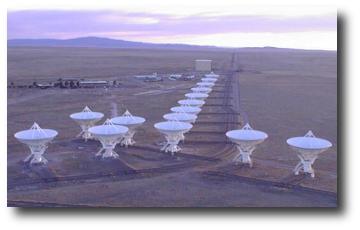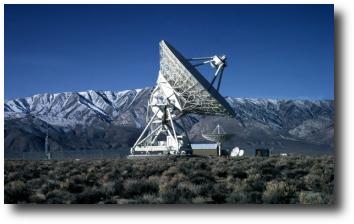| Public Outreach: | |
| Frequently Asked Questions | |
| Press Releases | |
| Introduction to Radio Astronomy | |
| For Visitors: | |
| Official Visitors | |
| Tourists | |
[an error occurred while processing this directive]
| AOC Internal: | |
| Computing | |
| Engineering | |
| Newsletters | |
| PRA | |
| safety | |
| Weekly Coordination Meetings | |
Updated 2013-Jul-25
© AUI, Inc., Washington, D.C.
Socorro, New Mexico |
|
|
Socorro, New Mexico, is the home of NRAO operations in New Mexico. Located on the campus of New Mexico Tech, the Array Operations Center houses scientific, engineering, technical, computer and support staff for both the Very Large Array and the Very Long Baseline Array. It includes the control center and correlator for VLBA observations and provides space for the Atacama Large Millimeter Array project. The Very Large Array (VLA), one of the world's premier astronomical radio observatories, consists of 27 radio antennas in a Y-shaped configuration on the Plains of San Agustin 80 km (50 miles) miles west of Socorro, New Mexico. Each antenna is 25 meters (82 feet) in diameter. The data from the antennas is combined electronically to give the resolution of an antenna 36km (22 miles) across, with the sensitivity of a dish 130 meters (426.5 feet) in diameter. |
 Twilight at The Very Large Array, near Socorro, New Mexico |
|
The Very Long Baseline Array (VLBA) is a system of 10 radio telescopes controlled remotely from the Array Operations Center in Socorro, New Mexico. The antennas are spread across the United States from St. Croix in the Virgin Islands to Mauna Kea on the island of Hawaii, making it the world's largest dedicated, full-time astronomical instrument. |
 VLBA Antenna at Owens Valley, California |
